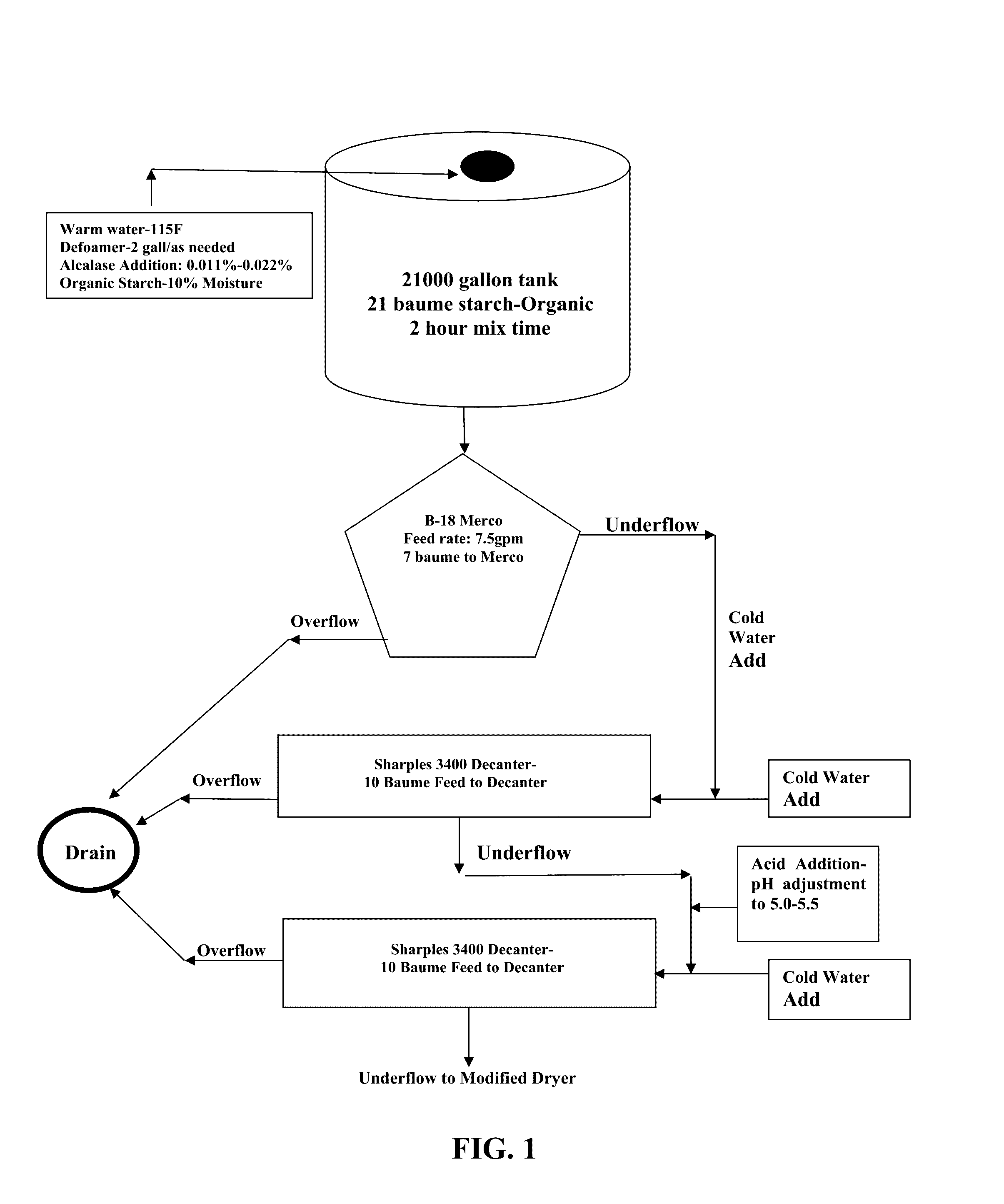Gluten-free starch and methods of producing the same
- Summary
- Abstract
- Description
- Claims
- Application Information
AI Technical Summary
Benefits of technology
Problems solved by technology
Method used
Image
Examples
Embodiment Construction
[0032]Commercial wheat gluten is popularly called “vital wheat gluten” and contains about 75% protein, up to 8% moisture, and varying amounts of starch, lipids, and fiber. When hydrated, it forms a cohesive viscoelastic mass, unlike other plant proteins. Wheat gluten is an important item in world trade and is a significant ingredient in the food (e.g., bakery, pasta, noodle, breakfast cereal, and snack products), feed, and pet food industries.
[0033]Wheat gluten has an isoelectric point at pH 7.5, meaning it has equal number of positive and negative charges and minimum solubility at that pH. This also means that wheat gluten possesses good solubility at acidic and alkaline pHs depicting a U-shaped pH / solubility curve.
[0034]Commercial wheat starch has about 10% moisture and is typically bright white in color with free-flowing properties. The starch is composed of about 75% by weight of large, lenticular granules and about 25% by weight of small, round granules. The diameter of large g...
PUM
| Property | Measurement | Unit |
|---|---|---|
| Temperature | aaaaa | aaaaa |
| Temperature | aaaaa | aaaaa |
| Fraction | aaaaa | aaaaa |
Abstract
Description
Claims
Application Information
 Login to View More
Login to View More - R&D
- Intellectual Property
- Life Sciences
- Materials
- Tech Scout
- Unparalleled Data Quality
- Higher Quality Content
- 60% Fewer Hallucinations
Browse by: Latest US Patents, China's latest patents, Technical Efficacy Thesaurus, Application Domain, Technology Topic, Popular Technical Reports.
© 2025 PatSnap. All rights reserved.Legal|Privacy policy|Modern Slavery Act Transparency Statement|Sitemap|About US| Contact US: help@patsnap.com

